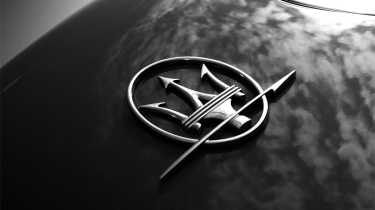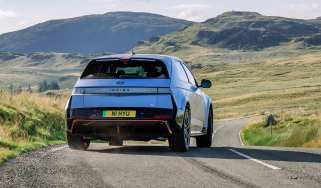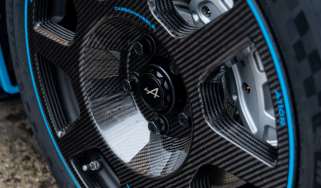Maserati history
Few car companies have had a more turbulent past than Maserati. Martin Buckley traces the highs – and the lows
The history of Maserati has been drama from one end to the other. A great name prevailed over by opportunistic tycoons, the cars have been (mostly) great but the circumstances of their production agonising. Looking back over the 90-year history, you begin to marvel at how it has survived so long.
The Bologna-based Maserati brothers – Alfieri, Bindo, Ernesto and Ettore – were effective builders of pure racing cars in the Twenties and Thirties but had modest financial acumen and showed little interest in making road cars. They made their money, in fact, producing spark plugs.
In 1937, the brothers sold out to the ruthless Adolfo Orsi, an industrialist with steel mills in Modena. It was the family spark plug business that Orsi really wanted, but he saw the publicity value in the Maserati brothers’ racing activities and kept them on. At first it must have seemed like an ideal solution, leaving Orsi to deal with the admin and the brothers free to pursue racing glory. It didn’t quite work out like that…
Orsi ordered that the firm be relocated in Modena on the Via Ciro Menotti, where it can still be found today. He then made himself president and installed his brother-in-law as MD. The Maserati brothers spent the war producing spark plugs, batteries and even a three-wheeled electrically powered truck. Ex Fiat and Alfa Romeo men were brought in on the management and design sides, further undermining the brothers’ position. They became so sidelined that the second their contract expired in May 1947 they walked out.
Meanwhile plans for the first Maserati road cars had been hatched by Orsi, 1.5 and 2-litre GTs that were rather stodgy in character at first but became the basis of some of the most beautiful bodywork of the time. Production was limited to 140 cars over ten years and the clientele was exclusive too: deposed Euro-royalty, South American gangsters and several dictators, probably because Orsi got on so well with them. Juan Peron was deposed before he could take delivery of his Zagato Spyder, but his wife, Eva, owned one of the very first 1.5-litre Maseratis. Another ‘colourful’ customer was Angelo Pamaccio, who later became famous for directing an Italian ‘porno erotica’ western.
All this was set against a background of industrial unrest at the Maserati factory. Orsi was an unforgiving boss who would summarily dismiss those workers who complained about his methods. Closely aligned with the fascist regime pre-war, his aim in those early post-war years was increased production from fewer employees on lower wages. So when the Christian Democrats defeated the Communist party in the Italian elections in 1950, Orsi saw his chance: he locked-out 600 workers and said he would only re-employ those he approved of; in other words the non-communist voters.
Some came back, but many of the best either set up on their own or went to work for Enzo Ferrari, who was more than happy to take them on. (There was little love lost between Ferrari and Orsi. Using his influence over the banks, Orsi had tried to thwart Ferrari’s expansion seven miles up the road at Maranello.) The unrest at Maserati hit the national headlines when six striking workers, protesting at the sackings, were shot dead by police.
Omer Orsi, son of Adolfo, took over the running of the car-making business in 1950, and in 1953 Giulio Alfieri took control of design and engineering. It was a golden period, with the introduction of the series-produced, Alfieri- engineered 3500 in 1957 and the success of the 250F in the world drivers’ championship. But behind the scenes there was big trouble.
Adolfo had become embroiled in financial dealings with General Peron of Argentina, who signed a $3,000,000 machine tool contract. Orsi gave the Argentineans three years to pay and went to the Italian banks to fund the investment. When, a year later, the Peron regime was ousted, the Argentineans had paid only a small part of their bill – all in wheat to the Italian government. Peron’s successors had no intention of finding the rest of the money they owed Orsi.
In April 1958 the government bank Credito Italiano asked for Orsi to be declared bankrupt and impounded the Maserati assets. Time magazine reported that ‘the shamed Orsis’ had gone into hiding.
But not for long. The Sixties were a period of relative calm as the Orsis focused on road car production and paying back their creditors. They built cars named after exotic winds, six- cylinder and V8-engined GTs like the Mistral and Ghibli that were relatively unsophisticated but glamorous, fast and capable. They were profitable enough to keep the Orsis’ creditors (the Italian banks) at bay, but a solution was still needed to assure the firm’s future.
It was via a lawyer in Rome that Adolfo Orsi had learned, in 1967, that Citroën was interested in building a flagship GT car with a Maserati engine, the still-secret SM. A meeting between the two firms was set up in Paris in July of that year. In December 1967 Orsi sold a 60 per cent share in Maserati to the French car maker; by June 1971 Citroën had acquired Maserati outright.
It was a short-lived marriage that produced desirable, adventurous cars like the Bora, Merak and Khamsin. But when sales of the SM dried up in the wake of the 1973 fuel crisis, Citroën, now controlled by the much more prudent accountants at Peugeot, found it had no further use for its loss-making Italian outpost. Under the French the workforce had swelled enormously from just over from 300 employees in 1968 to 900 in 1974. Yet productivity had fallen from 600 to 500 cars a year. Meanwhile the workers were given to wildcat strikes which decimated productivity. In 1974 alone the firm had lost 5 million dollars.
SM production stopped in May 1975 and Citroën declared Maserati bankrupt. It put the firm into liquidation having had no takers at 4 billion lira and made the workforce redundant. That appeared to be that.
But the workers were in no mood to be made redundant. They formed a defence committee, blockaded the factory and put the firm’s plight on the national agenda. It was, after all, an icon of the city of Modena. The government got involved, and a plan of action was drawn up. By August a public holding company, GEPI, had paid Citroën off and formed a partnership with controversial Argentinean businessman Alejandro De Tomaso who, for an initial 30 per cent stake in Maserati, agreed to run the firm as a minority shareholder.
De Tomaso cut the workforce by half, the cull including senior management; in 1976 Giulio Alfieri left for a job with Lamborghini having, reputedly, found his possessions out in the car park when he turned up for work one day. Alfieri had blocked an earlier attempt by De Tomaso to acquire the firm in favour of Citroën: this was the Argentinean’s revenge.
The Biturbo of 1981 was the beginning of a new adventure that would spawn an entire family of cars – and more than 50 different variations – over the next two decades. De Tomaso had identified that to make money Maserati had to industrialise and boost production with a cheaper car. His concept was a small, twin-turbo, 130mph, V6 saloon to compete with the BMW 3-series. It would sell for a mere £8200 (about half the price of a Porsche 911SC at the time).
Without doubt DeTomaso’s intervention at Maserati saved the company but at some cost to its reputation as a builder of credible GT cars. The Biturbo was too hurriedly developed and poorly made: can you think of another car that is likely to melt its fuse box when you switch on the heated rear window?
New Biturbo variants seemed to appear weekly but these attempts by De Tomaso to squeeze as much value as possible out of his investment were looking increasingly desperate by the late Eighties. Maserati reached its lowest ebb in 1989 with the TC, an intensely naff badge-engineered Dodge Daytona with an opera-windowed hardtop and a plush re-trim.
In 1988, De Tomaso turned to Fiat. He faced 37 billion lira operating losses and had to agree to a deal whereby Fiat had a 49 per cent holding. The factory at Lambrate, where Maserati bodywork had been built since the launch of the Biturbo, was closed in 1992 with the loss of 2000 jobs and De Tomaso had to return 150 billion lira to the GEPI government holding company. De Tomaso then suffered a stroke and sold out his 51 per cent shareholding in Maserati to Fiat the following year.
The introduction of the 3200GT in 1998 marked a turning point, giving Maserati an aura of credibility it had lacked for 20 years. Today, thanks to Fiat money and Ferrari professionalism, the company is better run than it has ever been, building great cars for which no excuses or allowances have to be made. Martin Buckley's book, Maserati, will be published in the Haynes Classic Marques Series later this year.





